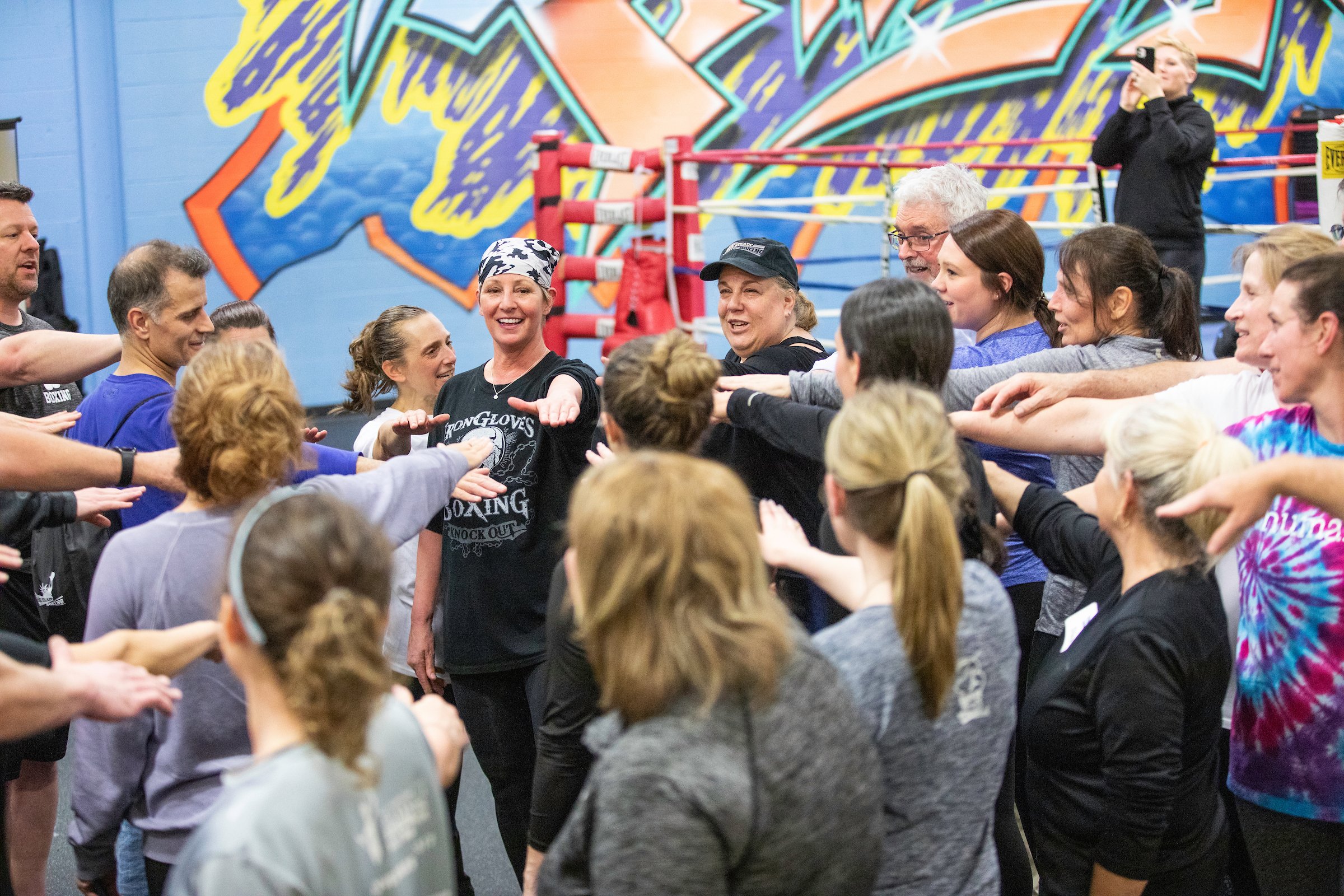
The Science Behind Rock Steady Boxing
When Rock Steady Boxing (RSB) was developed in 2006, the curriculum was based on addressing the primary symptoms of Parkinson Disease but there was very little in the scientific literature supporting exercise for Parkinson Disease. Now, years later, there is a growing body of scientific evidence supporting moderate-to-high intensity exercise as an essential intervention in the fight against Parkinson disease.
Dose of Exercise
150 minutes of moderate to vigorous exercise per week and should include Aerobic, Strength, Balance, and Stretching (Parkinson’s Foundation Exercise Recommendations 2021)
Exercise for PD should be moderate to high intensity and include Aerobic, Strength, Balance, Gait, and Community-based exercise (American Physical Therapy Association Neuro Clinical Practice Guidelines)
Improved Balance and Decreased Falls
RSB participants improved balance on the Fullerton Assessment of Balance, Timed Up-and-Go, and with Sit-to-Stand testing¹˒²˒³
Reduced falls 87% in RSB participants⁴
Improved Non-Motor Symptoms of PD
Compared to non-RSB participants, RSB participants reported
70% improvement in social life, 62% improvement in fatigue, 61% improvement in fear of falling, 60% improvement in depression, and 58% improvement in anxiety⁵
Compared to non-RSB participants, RSB participants had a significantly higher Quality of Life score on the PDQ-39⁵
Neuro Protection and Neuro Plasticity
Exercise was shown on functional MRI to improve signal transmission in the PD brain, effectively demonstrating neuroprotection and neuroplastic changes related to exercise⁶
High intensity exercise decreases chronic neuro inflammatory markers offering neuroprotection to those with PD⁷
Decreased Risk of Hospitalization
Greater exercise duration and intensity reduced the odds of a hospital encounter in the PD population⁸
Rock Steady Boxing was designed specifically for those with Parkinson disease as well as those with Atypical PD (Multisystem Atrophy, Dementia with Lewy Bodies, Progressive Supranuclear Palsy, and Corticobasilar Degeneration).
1. Dawson, Rachael A., et al. "Boxing exercises as therapy for Parkinson disease." Topics in Geriatric Rehabilitation 36.3 (2020): 160-165.
2. Moore, Abbie, et al. "A Community-based Boxing Program is Associated with Improved Balance in Individuals with Parkinson’s Disease." International journal of exercise science 14.3 (2021): 876.
3. Sonne, James WH, et al. "A Retrospective Analysis of Group-Based Boxing Exercise on Measures of Physical Mobility in Patients With Parkinson Disease." American Journal of Lifestyle Medicine (2021): 15598276211028144.
4. Horbinski, Craig, et al. "Longitudinal Study of Boxing Therapy in Parkinson’s Disease, Including Adverse Impacts of the COVID- 19 Lockdown." Research Square (2021).
5. Larson, Danielle, et al. "High satisfaction and improved quality of life with Rock Steady Boxing in Parkinson’s disease: results of a large-scale survey." Disability and Rehabilitation (2021): 1-8.
6. Johansson, Hanna, et al. "Exercise-induced neuroplasticity in Parkinson’s disease: a metasynthesis of the literature." Neural plasticity 2020 (2020).
7. Malczynska-Sims, Paulina, et al. "High-intensity interval training modulates inflammatory response in Parkinson’s disease." Aging clinical and experimental research 34.9 (2022): 2165-2176.
8. Kannarkat, George T., et al. "Effect of exercise and rehabilitation therapy on risk of hospitalization in Parkinson's disease." Movement disorders clinical practice 9.4 (2022): 494-500.


